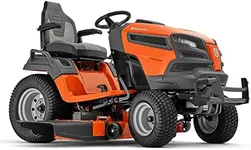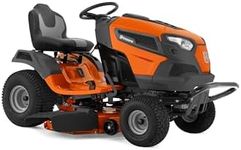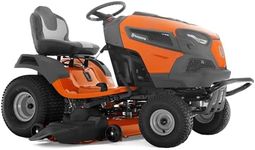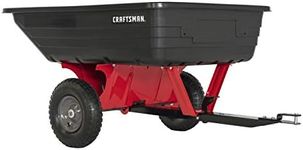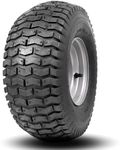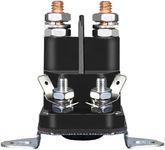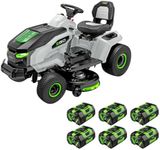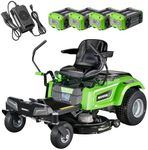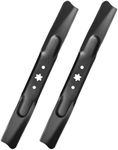Buying Guide for the Best Lawn Tractors
Choosing the right lawn tractor can make maintaining your lawn much easier and more efficient. When selecting a lawn tractor, it's important to consider the size of your lawn, the type of terrain, and the specific tasks you need the tractor to perform. By understanding the key specifications and how they relate to your needs, you can make an informed decision and find the best fit for you.Engine PowerEngine power, measured in horsepower (HP), determines how much work the tractor can handle. Higher horsepower means the tractor can tackle tougher jobs and larger areas more efficiently. For small to medium-sized lawns, an engine with 15-20 HP is usually sufficient. For larger lawns or more demanding tasks like towing heavy attachments, you might need a tractor with 20-30 HP or more. Consider the size of your lawn and the type of work you'll be doing to choose the right engine power.
Cutting WidthThe cutting width refers to the width of the area the tractor can mow in a single pass. A wider cutting width means fewer passes to mow your lawn, saving you time. For small lawns, a cutting width of 30-42 inches is typically adequate. Medium to large lawns may benefit from a cutting width of 42-54 inches. For very large properties, a cutting width of 54 inches or more can be ideal. Match the cutting width to the size of your lawn to ensure efficient mowing.
Transmission TypeThe transmission type affects how the tractor moves and how easy it is to operate. Manual transmissions require shifting gears, which can be more challenging for some users. Automatic transmissions, similar to those in cars, are easier to use and provide smoother operation. Hydrostatic transmissions offer the smoothest and most precise control, using fluid to transfer power. If you prefer simplicity and ease of use, an automatic or hydrostatic transmission is a good choice. For those comfortable with manual shifting, a manual transmission can be a cost-effective option.
Deck ConstructionThe deck construction refers to the material and build quality of the mowing deck. Stamped steel decks are common and generally more affordable, but they may not be as durable as fabricated steel decks, which are welded and more robust. If you have a relatively smooth lawn and don't expect to encounter many obstacles, a stamped steel deck should suffice. For rougher terrain or if you need a more durable option, a fabricated steel deck is a better choice.
Turning RadiusThe turning radius indicates how tightly the tractor can turn. A smaller turning radius allows for better maneuverability, especially around obstacles like trees and flower beds. For lawns with many obstacles or intricate landscaping, a turning radius of 16 inches or less is ideal. For more open lawns, a larger turning radius may be acceptable. Consider the layout of your lawn and how much maneuverability you need when choosing the turning radius.
Fuel CapacityFuel capacity determines how long the tractor can run before needing to refuel. Larger fuel tanks mean fewer stops to refill, which is convenient for larger lawns. For small to medium-sized lawns, a fuel capacity of 1-2 gallons is usually sufficient. For larger properties, a fuel capacity of 3-4 gallons or more can be beneficial. Think about the size of your lawn and how long you typically mow to decide on the appropriate fuel capacity.
Comfort FeaturesComfort features can make a big difference in your mowing experience. Look for features like adjustable seats, ergonomic steering wheels, and easy-to-reach controls. Some models also offer cruise control, cup holders, and even USB charging ports. If you spend a lot of time on your tractor, these features can enhance your comfort and make mowing more enjoyable. Consider which comfort features are important to you based on how long and how often you use the tractor.
